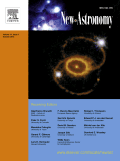
NEW ASTRONOMY
Scope & Guideline
Advancing Understanding in Astronomy and Astrophysics
Introduction
Aims and Scopes
- Cosmology and Gravitational Theories:
Research in this area explores various cosmological models, including those based on modified gravity theories, dark energy, and the implications of different gravitational frameworks on cosmic evolution. - Stellar and Binary Systems:
This scope includes the study of stellar dynamics, binary star systems, and their interactions, encompassing photometric and spectroscopic analyses to understand stellar evolution and properties. - Astrophysical Phenomena and Observations:
The journal publishes studies on a range of astrophysical phenomena such as supernovae, gamma-ray bursts, and X-ray emissions, often utilizing observational data from telescopes and space missions. - Exoplanetary Science:
Research on exoplanets, including their atmospheres, dynamics, and potential habitability, is a significant focus, utilizing methods like transit photometry and spectroscopy. - Computational Astrophysics:
The journal emphasizes the use of computational models and simulations to study complex astrophysical systems, including N-body simulations and hydrodynamic modeling. - Machine Learning Applications in Astronomy:
Recent papers highlight the integration of machine learning techniques to analyze astronomical data, enhance observational methods, and improve detection algorithms.
Trending and Emerging
- Modified Gravity Theories:
There is a growing trend in exploring modified gravity theories, particularly in relation to dark energy and cosmic acceleration, as researchers seek to understand their implications for cosmology. - Astrophysical Machine Learning:
The application of machine learning to process and analyze astronomical data is gaining traction, with studies focusing on classification, prediction, and anomaly detection in large datasets. - High-Resolution Observational Studies:
Emerging themes include the use of high-resolution observational techniques to study stellar and galactic phenomena, particularly in the context of large-scale surveys like GAIA. - Interstellar Medium and Cosmic Dust Studies:
Research on the interstellar medium and the role of cosmic dust in star formation and galaxy evolution is trending, with implications for understanding the lifecycle of matter in the universe. - Exoplanet Atmospheric Characterization:
The investigation into the atmospheres of exoplanets, particularly through spectroscopy and transit observations, is increasingly relevant as more exoplanets are discovered.
Declining or Waning
- Classical Mechanics in Celestial Dynamics:
There has been a noticeable decline in papers focusing on traditional celestial mechanics problems, such as the restricted three-body problem, as researchers increasingly turn to more complex and realistic models. - Static Cosmological Models:
The interest in static cosmological models has waned, with a shift towards dynamic and evolving models that better accommodate observational data and theoretical developments. - Basic Stellar Structure Models:
Research centered on simple models of stellar structure and evolution is decreasing, as more sophisticated simulations and observational data provide better insights into stellar physics.
Similar Journals

Astrophysical Bulletin
Advancing Knowledge in Astronomy and AstrophysicsWelcome to the Astrophysical Bulletin, an esteemed journal published by MAIK NAUKA/INTERPERIODICA/SPRINGER that has been contributing to the fields of Astronomy and Astrophysics since its inception in 2009. With a prominent Q3 rating in both Astronomy and Astrophysics and Instrumentation, this journal is designed to foster an understanding of astronomical phenomena through comprehensive research articles and groundbreaking discoveries. While currently not offering open access, it remains a vital resource for researchers and professionals looking to stay informed on the latest advances in the field, featuring a compelling selection of peer-reviewed studies that underscore its relevance and impact. The Astrophysical Bulletin ranks impressively in Scopus, making it a trusted platform for disseminating vital knowledge and new insights into our universe.

Journal of Cosmology and Astroparticle Physics
Exploring the Universe, One Particle at a TimeThe Journal of Cosmology and Astroparticle Physics (ISSN: 1475-7516) is a premier publication in the field of astronomy and astrophysics, dedicated to advancing our understanding of the cosmos through innovative research. Published by IOP Publishing Ltd in the United Kingdom, this journal has established itself as a vital resource for researchers, professionals, and students alike, with an impressive Scopus rank of #11/90, placing it in the top 12% of its field. The journal aims to foster the dissemination of groundbreaking studies related to cosmology, dark energy, particle physics, and the universe's fundamental structure, making it a key player in shaping contemporary astrophysics discourse. With a Category Quartile of Q2 as of 2023, it continues to attract high-quality contributions that enhance scholarly dialogue. As an accessible platform, it engages a diverse audience interested in the frontiers of astrophysical research, encouraging collaboration and knowledge sharing among the global scientific community.

Gravitation & Cosmology
Charting the Frontiers of Cosmic ExplorationGravitation & Cosmology is a vital academic journal founded to explore the profound concepts of gravitation and the dynamics of the universe. Published by MAIK NAUKA/INTERPERIODICA/SPRINGER, this journal features a comprehensive range of research articles, reviews, and theoretical insights that advance the field of astronomy and astrophysics. With a current impact factor reflective of its esteemed contribution, Gravitation & Cosmology operates within the upper tier of its discipline, classified as Q3 in Astronomy and Astrophysics for 2023. Although not an open-access publication, the journal fosters a vibrant community of scholars and practitioners by providing rigorous peer-reviewed content accessible through various academic platforms. Covering converged years from 2008 to 2024, this journal serves as an indispensable resource for anyone keen on deepening their understanding of gravitational phenomena and cosmological theories. Researchers, professionals, and students alike will find valuable insights and innovative research that push the boundaries of contemporary astrophysical knowledge.
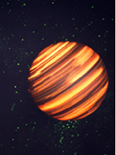
Annual Review of Astronomy and Astrophysics
Exploring the cosmos, one review at a time.Annual Review of Astronomy and Astrophysics is a premier academic journal published by Annual Reviews, dedicated to advancing knowledge in the fields of astronomy and astrophysics. With an impressive impact factor and recognition as a Q1 journal in both Astronomy and Astrophysics, as well as Space and Planetary Science, it stands amongst the top-ranked publications globally with Scopus Rankings placing it in the 99th percentile. The journal spans over three decades of scholarly contributions from 1990 to 2023, creating a rich repository of knowledge for researchers, professionals, and students alike. Although it does not offer Open Access, its rigorous peer-review process ensures the utmost quality and relevance of published articles, making it an essential resource for anyone seeking to stay at the forefront of developments in the cosmos. With its dedication to covering the forefront of research and essential reviews, the Annual Review of Astronomy and Astrophysics is vital for those engaged in exploring the universe and its phenomena.

Serbian Astronomical Journal
Illuminating the Universe with Cutting-Edge InsightsSerbian Astronomical Journal, published by the Astronomical Observatory Belgrade, serves as a significant platform for research and innovation within the field of astronomy and astrophysics. With an established publication history since 1992 and an Open Access model, the journal ensures that its cutting-edge research is accessible to a global audience. The journal is recognized for its contribution to the scientific community, evidenced by its solid position in the 2023 Scopus category quartiles, ranking Q3 in Astronomy and Astrophysics. This positions it among notable journals in the discipline, despite being at the 18th percentile of its category rankings. Researchers, professionals, and students will find in Serbian Astronomical Journal a valuable resource for disseminating findings, exploring new discoveries, and engaging with contemporary challenges in astronomy. As the journal continues to evolve, it remains dedicated to advancing the knowledge and understanding of the universe.
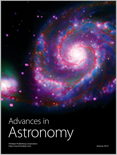
Advances in Astronomy
Bridging Knowledge Gaps in Astronomy and Planetary Sciences.Advances in Astronomy is a prestigious open-access journal published by HINDAWI LTD, dedicated to the field of astronomy and astrophysics. Established in 2008, the journal aims to disseminate significant research findings and advancements in the understanding of celestial phenomena, planetary sciences, and the intricate workings of the universe. With an impact factor that reflects its relevance in the scholarly community, Advances in Astronomy holds a commendable rank of Q3 in both Astronomy and Astrophysics as well as Space and Planetary Science categories, indicating its importance within these fields. The journal also showcases a commitment to open-access publishing, ensuring that research is readily available to both the scientific community and the public. Researchers, professionals, and students alike are encouraged to contribute to this dynamic forum to share knowledge and foster collaboration in exploring the wonders of the cosmos.
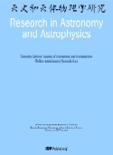
Research in Astronomy and Astrophysics
Illuminating the Frontiers of Astronomy and Astrophysics.Research in Astronomy and Astrophysics, published by the National Astronomical Observatories under the Chinese Academy of Sciences, stands out as a pivotal platform for disseminating cutting-edge research in the fields of astronomy and astrophysics. With an ISSN of 1674-4527 and an E-ISSN of 2397-6209, this esteemed journal operates as an open access publication, ensuring that high-quality research is available to a broad audience without any financial barriers. As of 2023, it holds a commendable Q2 quartile ranking in both Astronomy and Astrophysics, as well as Space and Planetary Science, reflecting its importance and revered position among leading journals. Spanning from 2009 to 2024, it is geographically rooted in the United Kingdom but engages a global readership and author base, making significant contributions to the rapidly evolving discourse in astrophysical studies. Moreover, its rankings in Scopus underscore its relevance, ranking 43rd out of 90 in Astronomy and Astrophysics and 61st out of 104 in Space and Planetary Science, placing it firmly within the competitive landscape of scientific research. Research in Astronomy and Astrophysics is dedicated to fostering innovation and communication within the scientific community, offering researchers, professionals, and students alike a valuable resource for collaboration and knowledge advancement.

Journal of the Korean Astronomical Society
Illuminating the Universe: Pioneering Research in Space ScienceWelcome to the Journal of the Korean Astronomical Society, an esteemed publication dedicated to advancing the fields of Astronomy and Astrophysics as well as Space and Planetary Science. Established in 1993 and under the reputable auspices of the Korean Astronomical Society, this journal serves as a vital platform for researchers and scholars from South Korea and around the globe to disseminate innovative findings and critical insights. With a commendable Q2 ranking in Astronomy and Astrophysics and a Q3 ranking in Space and Planetary Science, this journal is positioned among the influential voices in its fields, fostering collaboration and knowledge exchange. The journal's rigorous peer-review process ensures that published works contribute significantly to ongoing discussions and developments in astronomical research. While currently not an open-access journal, it remains accessible to the academic community, encouraging readers to stay abreast of the latest advancements in the sciences that elucidate the universe's complexities. Join us in exploring the cosmos through cutting-edge research and scholarly discussion that propels the field forward.
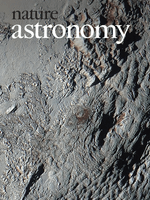
Nature Astronomy
Exploring the Cosmos: Where Pioneering Research Meets Stellar Insights.Nature Astronomy, published by NATURE PORTFOLIO, stands at the forefront of the field of Astronomy and Astrophysics. Since its inception in 2016, this esteemed journal has rapidly ascended to a prestigious position, achieving a Q1 ranking in the Astronomy and Astrophysics category and securing an impressive 6th place out of 90 journals in the Scopus rankings, placing it in the 93rd percentile. With a focus on disseminating pioneering research, Nature Astronomy provides a vital platform for the dissemination of high-quality, impactful findings across various aspects of astronomical science. Researchers, professionals, and students alike will find a wealth of knowledge and innovative perspectives within its pages, enabling them to stay ahead in a rapidly evolving field. Although it does not offer open access, the journal's commitment to excellence and its influence in shaping the future of astronomical research make it an indispensable resource for anyone serious about advancing their understanding of the cosmos.
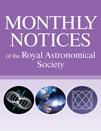
MONTHLY NOTICES OF THE ROYAL ASTRONOMICAL SOCIETY
Pioneering Insights in Space and Planetary Science.The MONTHLY NOTICES OF THE ROYAL ASTRONOMICAL SOCIETY (MNRAS), published by Oxford University Press, serves as a premier platform for the dissemination of significant research in the fields of Astronomy, Astrophysics, and Space and Planetary Science. Established in 1913 and with an impressive impact factor reflected in its 2023 Q1 rankings—13th in Earth and Planetary Sciences and 14th in Physics and Astronomy—this journal is renowned for its rigorous peer-reviewed articles, fostering advancements in our understanding of the universe. Researchers, professionals, and students alike benefit from its rich content, which spans a vast array of topics within its scope, from stellar dynamics to planetary formation. While the journal does not currently offer Open Access options, the scholarly contributions published herein are invaluable for pushing the boundaries of contemporary scientific inquiry and ensuring that the latest findings reach an engaged audience globally.